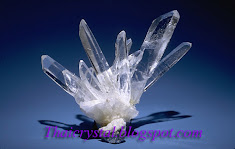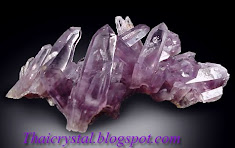Amber has been held in high esteem for thousands of years on account of it's warm, golden transparency and the soft lustre it acquires on being polished. It has been used for ornament longer than most materials taken from the earth and so merits special mention here, though its claim to be a gem mineral may be disputed on various grounds.
Unlike other minerals, amber is formed from the resin of a species of pine tree and not from the inorganic constituents of the earth crust. Although a little amber is still found on seashores and land surfaces, most has to be won by open cast mining like many other minerals. The claim that it is not a gemstone of great value is true; it is more appropriately classed among ornamental materials and sold by the piece, not by the carat weight. But no account of gemstones would be complete without its inclusion, id only because of its popularity and long history.
Amber varies in color from a pale yellow to a dark brown, depending partly on its origin; some is naturally red , but many other colors can be imparted to it by staining, particularly green.
The most prolific source of amber is the Baltic seacoast to the north and west of a town Kaliningrad in Russia. Amber from this source is sometimes called succinite (Latin succus, juice), to distinguish it from material derived, for example, from Rumania (rumanite), Burma (burmite), and Sicily (simetite, strongly fluorescent). Small deposits occur elsewhere, notably in Dominican Republic. On the Baltic coasts mentioned, amber has been dredged in nets from the sea bottom for centuries, the collection being strictly regulated. Nowadays hardly any amber is won there by surface collection and mechanized open-cast mining is used instead. The trees that exuded the resin grew in what is now central and south-eastern Sweden, from where the amber was carried by rivers and the sea to the present site.
Specialists distinguish many qualities of amber according to color and cloudiness. This cloudiness is caused by minute air bubbles trapped within the stone. Amber is famous for containing insects and small animals of various kinds as well as leaves, bark and other contemporary detritus which became struck and enclosed in the resin while it was still liquid. These objects have been preserved in minute detail to the benefit of palaeontologists and the delighted wonder of the lucky finders.
Amber has been used for beads and pendants from remote antiquity. The beads may be fashioned quite roughly or they may be formed as spheres, graded in size or faceted in many shapes. Most elaborate amber carvings are made in China and Japan.

Custom Search

















































